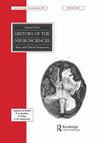Cross-sectional representations of the central nervous system in Pirogov’s “Ice Anatomy”
IF 0.3
3区 哲学
Q3 HISTORY & PHILOSOPHY OF SCIENCE
引用次数: 0
Abstract
ABSTRACT Russian surgeon Nikolay Ivanovich Pirogov (Pirogoff; 1810–1881) introduced the teaching of applied topographical anatomy in Russia. Pirogov’s monumental four-part atlas, Anatome topographica sectionibus per corporis humanum congelatum triplici directione ductis illustrate (An Illustrated Topographic Anatomy of Saw Cuts Made in Three Dimensions Across the Frozen Human Body), colloquially known as the “Ice Anatomy,” was published in Latin in folio in the 1850s. Pirogov sought to investigate “the normal and pathological positions of different organs and body parts using sections made in the three principal directions [anatomical planes] … throughout all regions.” To accomplish this, he froze cadavers “to the density of the thickest wood” and then cut them into thin plates with a special mechanical saw. His approach was reportedly inspired by his observations of butchers sawing across frozen pig carcasses at the meat market in St. Petersburg during winter. Pirogov systemically obtained full-size representations of more than 1,000 sections. A painter made a representative copy of the cross-sectional contours of each section, using ruled glass overlain on the sections. The final lithographs were of high artistic quality and execution, resembling modern high-resolution medical imaging (i.e., CT or MRI). Moreover, structures were serially sectioned and systematically illustrated along all three anatomical planes, something that had never previously been attempted. This allowed clinicians and anatomists to scrutinize the spatial relationships of structures from multiple perspectives and at a much more detailed level than was previously possible, although the cost, massiveness, and complexity of the completed work precluded wide dissemination.Pirogov“冰解剖”中中枢神经系统的横断面表示
摘要俄罗斯外科医生Nikolay Ivanovich Pirogov(Pirogoff;1810–1881)介绍了俄罗斯应用地形解剖学的教学。皮罗戈夫的不朽的四部分地图集《人体解剖学》(Anatome topographica sectionibus per corporatis humanum consilatum triplici directione ductis diagram),通俗地说是“冰解剖学”,于19世纪50年代以对开本的拉丁文出版。皮罗戈夫试图研究“不同器官和身体部位的正常和病理位置,使用在三个主要方向[解剖平面]上制作的切片……在所有区域。”为此,他将尸体冷冻到“最厚的木头密度”,然后用特殊的机械锯将其切成薄板。据报道,他的做法受到了他观察到的屠夫在圣彼得堡肉类市场锯切冷冻猪尸体的启发。皮罗戈夫系统地获得了1000多个剖面的全尺寸表示。一位画家在每一个剖面上都用方格玻璃做了一个具有代表性的剖面轮廓复制品。最后的石版画具有很高的艺术质量和执行力,类似于现代高分辨率医学成像(即CT或MRI)。此外,沿着所有三个解剖平面对结构进行了连续切片和系统说明,这是以前从未尝试过的。这使临床医生和解剖学家能够从多个角度,以比以前更详细的水平仔细检查结构的空间关系,尽管完成的工作的成本、数量和复杂性阻碍了广泛传播。
本文章由计算机程序翻译,如有差异,请以英文原文为准。
求助全文
约1分钟内获得全文
求助全文
来源期刊

Journal of the History of the Neurosciences
社会科学-科学史与科学哲学
CiteScore
1.00
自引率
20.00%
发文量
55
审稿时长
>12 weeks
期刊介绍:
The Journal of the History of the Neurosciences is the leading communication platform dealing with the historical roots of the basic and applied neurosciences. Its domains cover historical perspectives and developments, including biographical studies, disorders, institutions, documents, and instrumentation in neurology, neurosurgery, neuropsychiatry, neuroanatomy, neurophysiology, neurochemistry, neuropsychology, and the behavioral neurosciences. The history of ideas, changes in society and medicine, and the connections with other disciplines (e.g., the arts, philosophy, psychology) are welcome. In addition to original, full-length papers, the journal welcomes informative short communications, letters to the editors, book reviews, and contributions to its NeuroWords and Neurognostics columns. All manuscripts are subject to initial appraisal by an Editor, and, if found suitable for further consideration, full- and short-length papers are subject to peer review (double blind, if requested) by at least 2 anonymous referees.
 求助内容:
求助内容: 应助结果提醒方式:
应助结果提醒方式:


